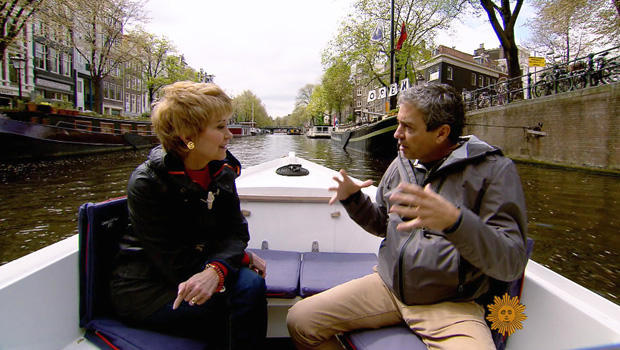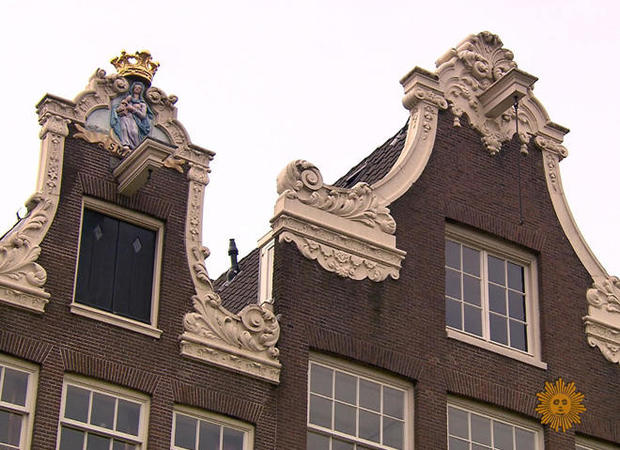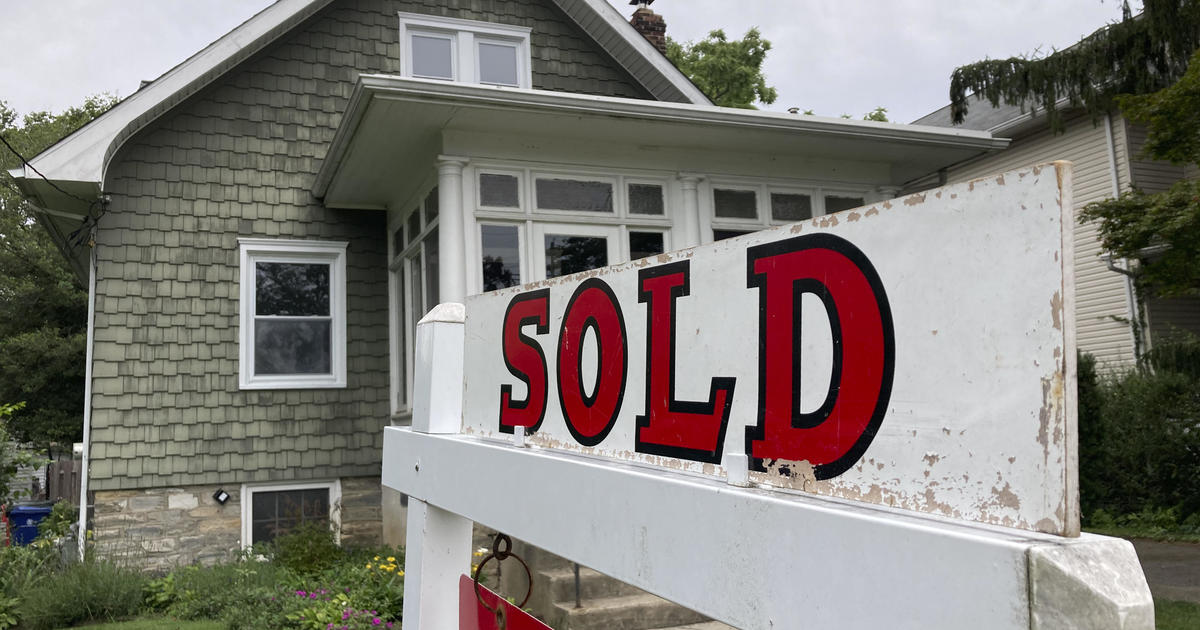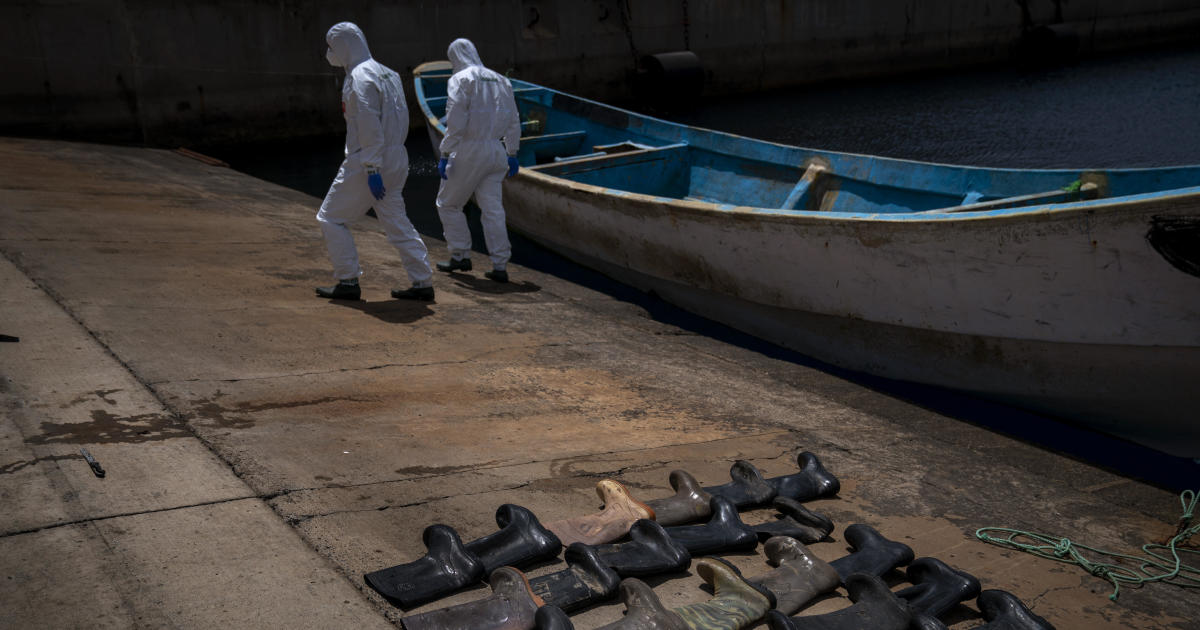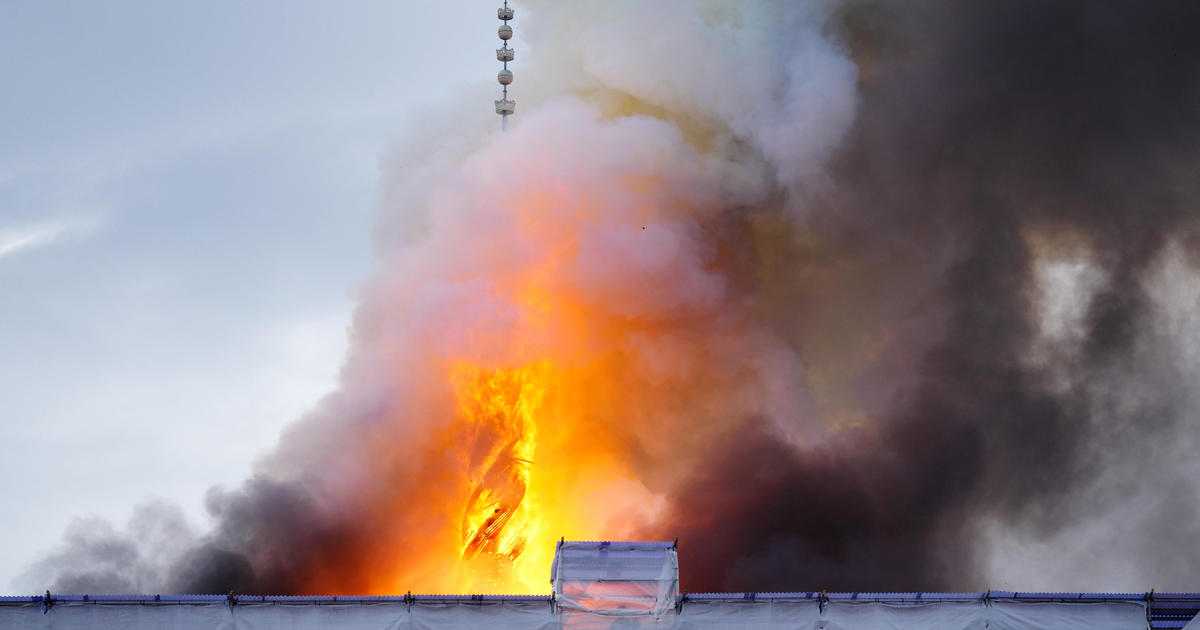Amsterdam, first city of the modern age
It's the fishing village that grew to become one of the largest ports in Europe: capital of the Netherlands, birthplace of the modern stock market, home to Rembrandt, Vincent Van Gogh and Anne Frank. Jane Pauley explores Amsterdam:
Perhaps the best way to tour this city is by boat, along its 60 miles of canals.
Our guide is Russell Shorto, author of a bestselling history of Amsterdam.
From its founding in the late 12th century, this city's location on a river delta that often flooded, posed a challenge for its residents: "And this the crucial point -- they started banding together in small groups in their communities and building dams and dikes and canals in order to control this problem of water, and make it work for them," said Shorto.
Their success in transforming their natural environment led to a re-shaping of their entire approach to life: "They started to realize, you know, we've got something here. It changed their mentality, and then they built on that."
What the people of Amsterdam built in the centuries that followed were the first businesses of the modern age: shipping, insurance, the first stock exchange, and international trading enterprises, like the Dutch East India Company.
As the economy grew, so did the city -- with eye-catching details at every turn.
Shorto described the history of the Herengracht (or "Gentleman's Canal"), dating from the 17th century: "This was the Golden Age city that we're in. And you had the medieval city first, and then the city fathers made this plan where they were going to lay out this ring of canals around it, because the city was expanding so rapidly."
The canals were lined with the townhouses of Amsterdam's thriving merchant class -- each adorned with special architectural details, such as stones that showed the owner's profession.
And the spout gables -- pieces of wood with hooks attached, protruding from the tops of buildings.
"That's a hoist beam," said Shorto. "And that was so, with a block and tackle, you would bring your goods on the canal up to your door, and then you would hoist them up, and you would store them in your attic."
And it wasn't all business; genius and talent also flourished in the arts during Amsterdam's Golden Age of the 1600s.
Rembrandt's paintings of the city's leading citizens, including the famous "Nightwatch," fill Amsterdam's Rijksmuseum. He captured all his subjects' outward signs of success, but also, Shorto says, something more: "He seemed able to paint who you were inside," he said. "And if you look at those paintings, you see that, and feel that. And you feel these people thought about themselves, for the first time, the way we think about ourselves today."
Along with Rembrandt, there was Van Gogh – with an entire museum devoted to his works.
One of the city's most visited sites is the Anne Frank House, where young Anne wrote her famous diary during the two years she and her family hid from the Nazis during World War II.
These days, it seems, there is a refreshing openness about life here. For example, there are no curtains in the windows. "Some people say that that is, 'Look, we have nothing to hide.' Or 'We're decent, ordinary people here,'" Shorto said. Nothing to see here!
Another thing an American visitor notices: Amsterdam's tolerant attitude toward everything from marijuana use to sex. The nearly 200 "coffeeshops" here don't just sell coffee; you can also legally buy marijuana, and smoke it on the spot.
And there's the famous "red light" district, where prostitutes legally display their wares.
Shorto says the city's tolerance is of long standing: "That is a tricky thing to try to understand, and I don't know if any foreigner, any outsider can really get it. But there's a Dutch word, gedogen, which means -- this is my definition of it -- 'technically illegal, but officially tolerated'."
Putting together everything seen on the tour, one begins to understand Amsterdam's unique draw:
"It's the city itself -- it's the city of canals and of canal houses, which are built for individuals," said Shorto. "It's a monument to the ordinary individual person and ordinary individual families. This is in many ways the birthplace of our modern sense of ourselves as individuals.
"This was where it all started."
For more info:
- russellshorto.com
- "Amsterdam: A History of the World's Most Liberal City" by Russell Shorto (Vintage). Available in Trade Paperback, eBook and Digital Audio Download formats
- Rijksmuseum, Amsterdam
- Van Gogh Museum, Amsterdam
- Anne Frank House, Amsterdam
- iamsterdam.com (Official tourist site)
- Follow @IAmsterdam on Twitter
